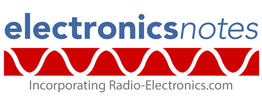Home » Component data » Voltage regulator data » this page
LM317 Linear Voltage Regulator Data
Key transistor data for the LM317 linear including key electrical parameters, pinout, package type and many other key transistor datasheet details.
The LM317 linear voltage regulator is a low cost, widely available, adjustable three-terminal positive-voltage regulator.
The regulator is capable of supplying more than 1.5 A over an output voltage range of 1.25 V to 37 V.
The device only requires two external resistors to set the output voltage.
The LM317 offers a good number of features including a typical line regulation of 0.01% and typical load regulation of 0.1%. the device includes current limiting, thermal overload protection, and safe operating area protection.
Key details and performance parameters for the LM317 linear voltage regulator.
| LM317 voltage regulator datasheet parameters & data |
|
|---|---|
| Parameters | Details |
| Brief description | Variable voltage 3 terminal linear regulator |
| Package type | TO220 & SOT223 |
| Output voltage range | 1.25 - 37V |
| Output current | 1.5 |
| Input voltage (V>) | 4.25 - 40V |
| Line regulation | 0.01% typical |
| Load regulation | 1.5% typical |
| TJ °C | 125 |
| Drop-out voltage (V) | |
Outlines & pinout:
Explanation of transistor parameters
| Parameter | Explanation |
|---|---|
| Output voltage | This is the key parameter for a fixed voltage regulator. Normally for fixed voltage regulators, values for the typical as well as minimum and maximum output voltages will be give. For variable regulators the limits of operation are given. |
| Output current | This is the maximum current which can be provided in mA or A. Sometimes there may also be a minimum current for the specified operation. |
| Input voltage regulation | This is the regulation performance for a given input voltage range. |
| Parameter | Explanation |
|---|---|
| Output voltage regulation | This is the output voltage regulation for a specified change in load current |
| TJ | Maximum junction temperature. |
| PTOT Max | Maximum device dissipation normally in free air at 25°C unless other conditions indicated. |
| Drop out voltage | This is the minimum voltage across the device, i.e. input to output, that will provide regulation. Below this value the regulator will not provide regulation. |
These are the main voltage regulator parameters that have been included in our list. There are others, but these help quantify the main elements of the performance of the regulator, but are normally deemed to be less important.
Please note, that the data given is the best estimate we can give within a tabulated summary of this nature. Parameters also vary between manufacturers. Electronics Notes cannot accept any responsibility for errors, inaccuracies, etc, although we do endevaour to ensure the data is as accurate as possible.
Notes and supplementary information
• Availability & sources
The LM317 is available from a number of stockists and electronic component distributors many of which are given in the table below.
LM317 Component Distributor, Stock and Pricing
• Circuit details
The LM317 voltage regulator chip is almost completely self contained, requiring just a few external electronic components to complete the circuit.
This voltage regulator chip is a three terminal floating regulator - it develops a nominal 1.25 volts internal reference voltage referred to as Vref between the output and adjustment terminals.
This reference voltage is then converted to what is termed a programming current, IPROG by the resistor R1, and then a constant current flows through the resistor R2 to ground.

More about LM317, circuits & details:
the LM317 can be used in a variety of circuits to fulfil a variety of different requirements.
Check out More LM317 Circuits & Details
The device is used in many small linear regulator PCBs that can be widely obtained, like the one below.

 Written by Ian Poole .
Written by Ian Poole .
Experienced electronics engineer and author.
Return to Component Data menu . . .



